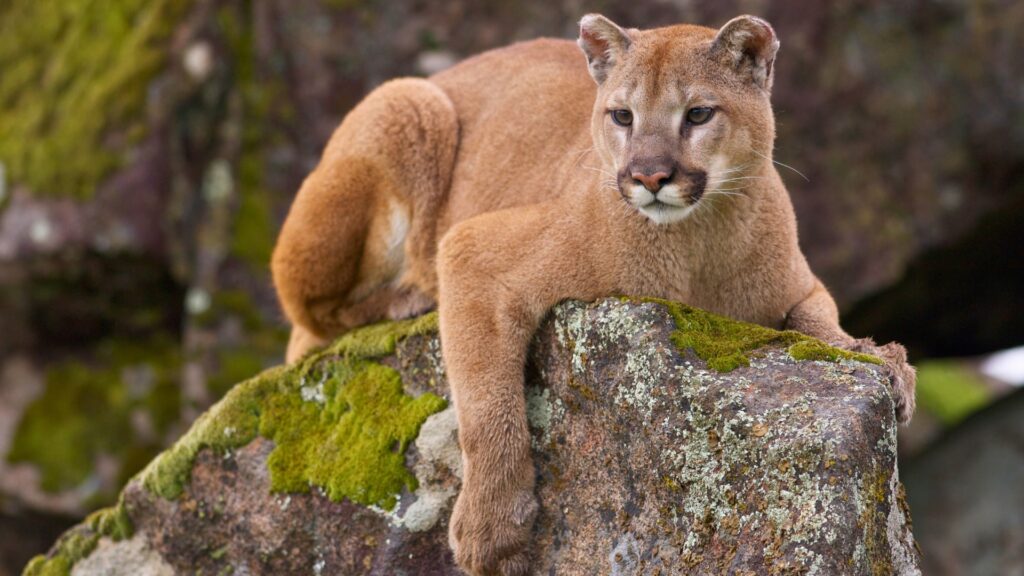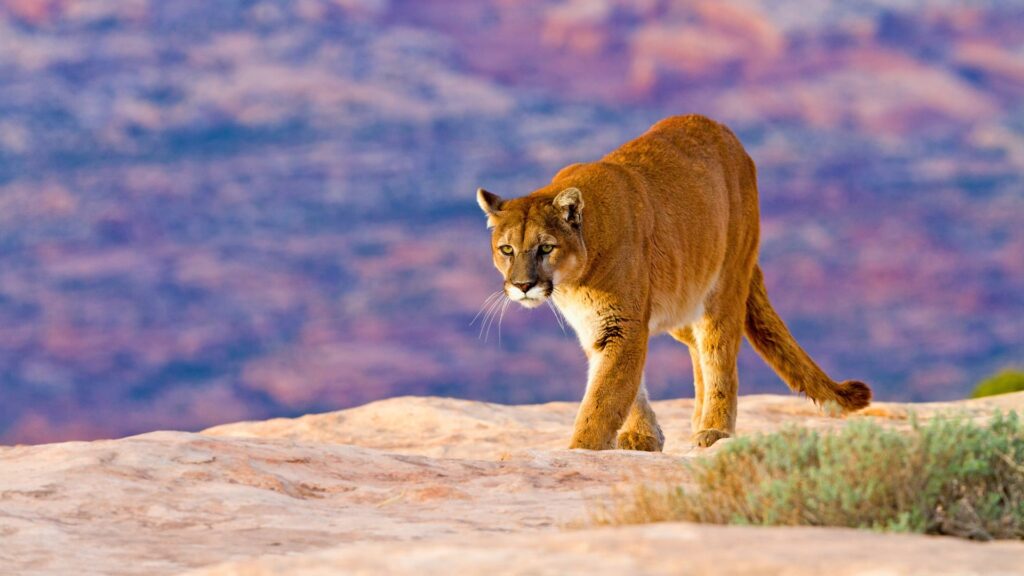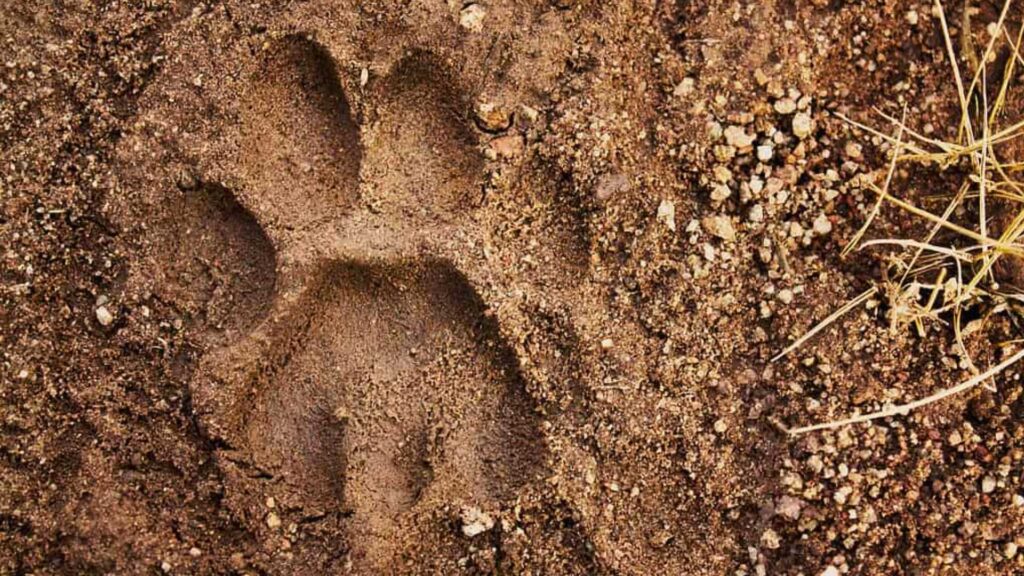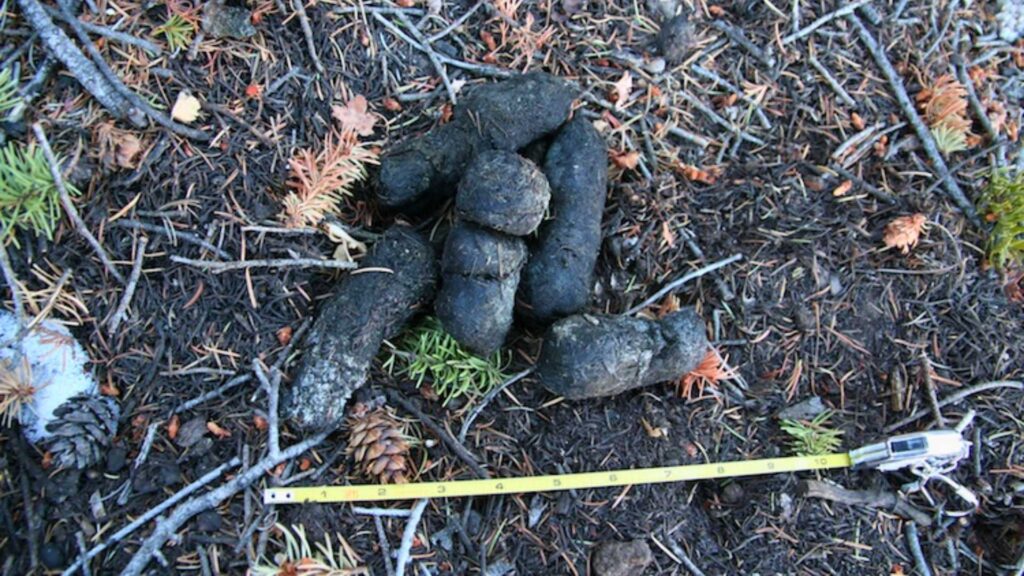Physical characteristics
Mountain lions (Puma concolor), also known as cougars or pumas, are large, powerful cats that can weigh up to 220 pounds (100 kg) and measure up to 8 feet (2.4 m) in length. They have short, tawny coats that range from yellowish-brown to gray, and their bodies are muscular and streamlined. Mountain lions have a long, cylindrical tail that is used for balance and communication, as well as distinctive black markings on the tips of their ears and the ends of their tails.
Behavior
Mountain lions are solitary animals that are active both during the day and at night. They are stealthy hunters that prefer to ambush their prey, and can leap up to 20 feet (6 m) in a single bound. They are also known for their ability to adapt to different environments, and are found in a variety of habitats including mountains, forests, and deserts.
Habitat
They can be found throughout North and South America, from the Canadian Yukon to Patagonia in South America. They prefer to live in areas with plenty of cover, such as dense forests, rocky terrain, and brushy areas.
Diet
Pumas are carnivorous and feed primarily on deer, but they will also eat smaller animals such as rabbits, hares, rodents, and birds. They are also known to prey on domestic livestock such as sheep and goats.
Breeding
Female cougars reach sexual maturity at around two years of age, and will typically give birth to two to four kittens after a gestation period of 82-96 days. The kittens will stay with their mother for up to two years, learning important hunting and survival skills before venturing out on their own.
Ecological role
Mountain lions play a vital role in the ecosystem as apex predators. As carnivores, they help regulate the populations of other animals, including deer, elk, and bighorn sheep. By preying on the sick, weak, and old, they help keep these populations healthy and strong. Additionally, they also help maintain biodiversity by preventing any one species from overgrazing or overpopulating an area.
Cougars also play an important role in shaping the behavior and distribution of other animals. For example, the presence of mountain lions in an area may cause deer to avoid certain areas or change their grazing habits, which can have a ripple effect on other plants and animals in the ecosystem. Research has also suggested that the presence of mountain lions can even help reduce the spread of disease among other animals, as they prey on the weakest and most vulnerable members of a population.

Mountain Lion Hunting
Hunting of mountain lions has been a controversial topic, with proponents arguing that it helps control populations and protects livestock, and opponents arguing that it is cruel and unnecessary. Mountain lion hunting regulations vary by state, with some states allowing hunting with a permit and others banning it altogether.
In areas where hunting is allowed, mountain lion hunting is typically regulated through quotas and seasons to help ensure sustainable populations. Hunters are required to have a license and often have to complete a safety course before they can hunt.
Some hunting methods, such as the use of dogs, have been banned in certain states due to concerns about animal welfare. Other methods, such as baiting and calling, are still permitted in some areas.
Hunting mountain lions can also be dangerous, as these animals are strong and can be unpredictable. Hunters are advised to take precautions and to be knowledgeable about the behavior and habitat of mountain lions before attempting to hunt them.
Overall, the hunting of mountain lions remains a divisive issue, with proponents and opponents offering differing perspectives on its necessity and impact on populations.
Tracks & Signs
Mountain lion tracks are characterized by their large size and round shape. They typically have four toes on the front and hind feet, and the claws are usually visible but don’t always register in the track. The tracks are asymmetrical, meaning the hind foot lands ahead of the front foot, resulting in a straight-line track pattern. Their average track size is around 3.5 to 4.8 inches (9 to 12 cm) in diameter, but they can vary depending on the individual’s age and sex.
Mountain lion scat (feces) is cylindrical in shape and usually contains animal hair, bone fragments, and remnants of the prey they have consumed. Fresh scat may have a moist appearance, while older scat tends to dry out and break apart. The presence of scat in the area indicates recent activity by a mountain lion.
Like other cats, mountain lions may use their claws to mark trees or logs, particularly during territorial displays or to leave scent marks. These scratch marks can be found at the base of trees and may be accompanied by urine markings to signal their presence to other mountain lions.
Conservation
Mountain lions are considered a species of least concern by the International Union for Conservation of Nature (IUCN), but their populations are still threatened by habitat loss, hunting, and conflict with humans. Conservation efforts include habitat protection, reintroduction programs, and public education to promote coexistence with these majestic cats.
Did You Know?
Mountain lions are incredibly athletic and agile
They can leap up to 20 feet (6 meters) horizontally in a single bound and can jump vertically over 15 feet (4.5 meters). These big cats are like Olympic high jumpers with a feline flair!
They possess a secret weapon
Their long, muscular tails! Pumas use their tails to help them maintain balance while running, climbing, and making sharp turns. It’s like having a built-in stabilizer for acrobatic maneuvers!
They have a mysterious repertoire of vocalizations
From purrs and hisses to chirps and screams, they have an impressive range of sounds to communicate with each other. They’re the charismatic singers of the wild, belting out tunes that echo through the canyons.
Image sources: AZ Animals, NatureTracking




